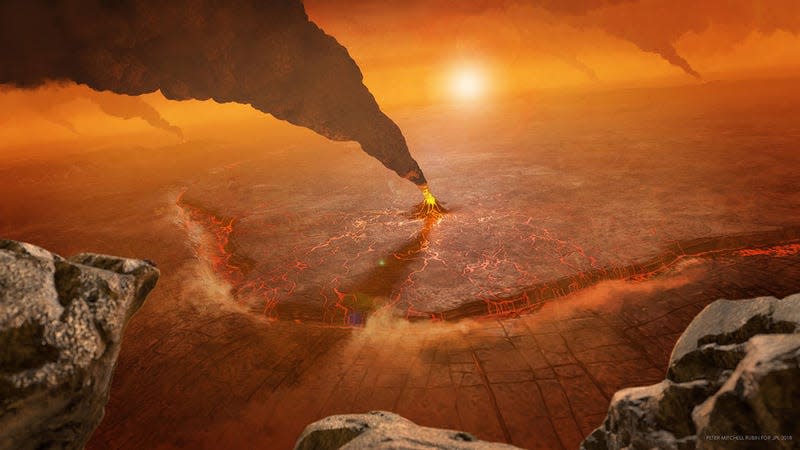Researchers Spot an Active Volcano on Venus, Suggesting the Planet Is Active

A new analysis of 30-year-old images taken by the Magellan spacecraft suggests that a volcanic eruption happened on the planet between 1990 and 1992. In other words, Venus is a living planet.
The discovery—published today in Science—seems to resolve a longstanding question about the scorching hot, craggy world: whether volcanoes are still active on the Venusian surface. If volcanic activity is responsible for the surface change seen in the images, Venus will be the third body in the solar system to host active magma volcanoes (as opposed to mud volcanoes). The other two bodies are Jupiter’s moon Io and (of course) Earth.
Read more
These Winning Close-Up Photos Show Life That's Often Overlooked
Remembering Enterprise: The Test Shuttle That Never Flew to Space
Venus is of such interest to space agencies that three missions are planned to head there in the next decade: NASA’s VERITAS and DAVINCI+ missions, and the European Space Agency’s EnVision mission.
The Magellan mission concluded in 1994; it was the first spacecraft to image the entire surface of Venus, an achievement that is paying off with the latest discovery. Over the last few years, Robert Herrick, a planetary scientist at the University of Alaska, Fairbanks, and the study’s lead author, sifted through countless radar images taken by Magellan. Eventually, an image stuck out: a caldera on Maat Mons, a volcano on Venus taller than Mount Everest.
According to the publication Science, Herrick then brought the data to Scott Hensley, a radar specialist at NASA’s Jet Propulsion Laboratory, who corroborated Herrick’s suspicions: that the altered caldera was evidence of volcanic activity. “We can rule out that it’s a dying planet,” Herrick told Science.
The notion that volcanoes are active on Venus has been suggested before. Quite recently, in fact: in 2020, a separate team of researchers identified 37 volcanic structures on Venus that showed signs of recent activity. The Magellan data affirms those findings.
Besides the towering shield volcanoes and pancake dome volcanoes on Venus, the planet also has huge canali—dried up lava channels—that show lava did flow on the planet’s surface in the ancient past. It is no stretch of the imagination to consider the same may still be the case, but Venus’ dense atmosphere makes it difficult to observe the planet’s surface.
Imaging technology has come a long way since Magellan completed its service. The upcoming Venus missions—whenever they actually happen—will surely overhaul our understanding of a world that is surprisingly similar to our own—besides its backwards rotation and sulfuric atmosphere.
More: The 7 Weirdest Things About Venus, Hell Planet
More from Gizmodo
Sign up for Gizmodo's Newsletter. For the latest news, Facebook, Twitter and Instagram.

 Yahoo News
Yahoo News 
